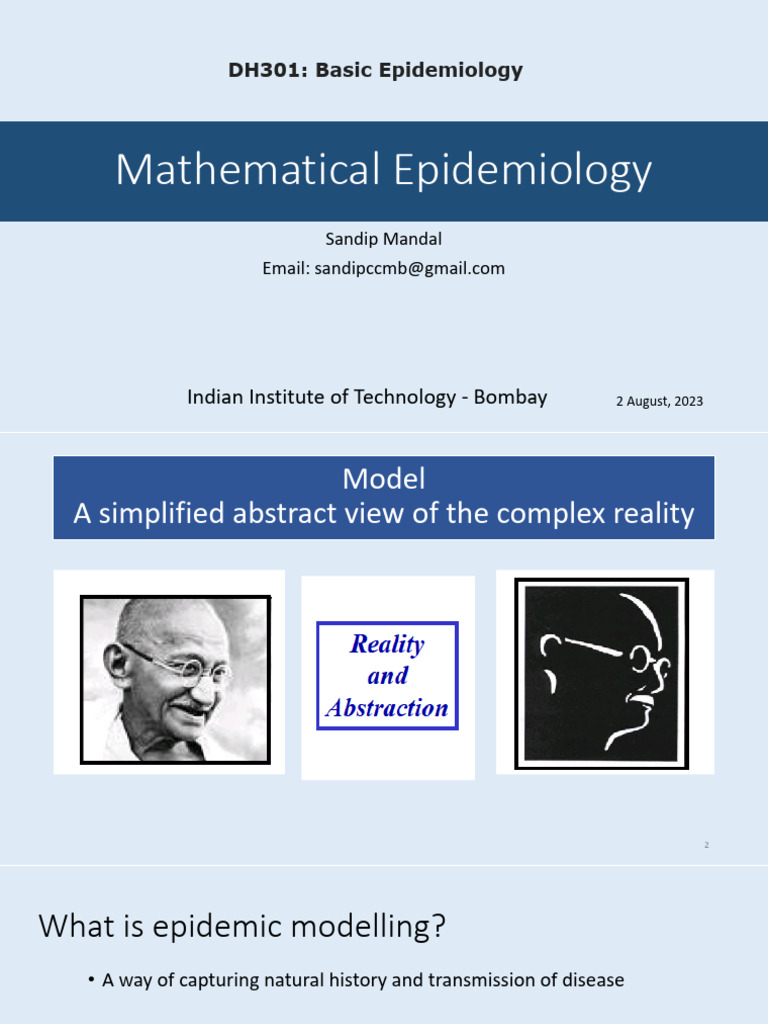The emergence and re-emergence of infectious diseases serve as poignant reminders of our interconnected existence. Within such an intricate web of life, the science of mathematical epidemiology endeavors to elucidate the dynamics of disease spread and control. The fundamental principles underlying mathematical epidemic modeling can be enigmatic, yet they offer invaluable insights into both global health and societal stability. Understanding these basic concepts requires an examination of various frameworks, theories, and methodologies employed in the field.
First and foremost, one must grasp the key components of epidemiological models, which typically include ‘susceptible,’ ‘infected,’ and ‘recovered’ (often referred to as the SIR model). This simplistic framework serves as a foundational structure through which more complex dynamics can be analyzed. In the SIR model, individuals in a population transition between these three states, influencing and being influenced by one another through the mechanisms of transmission. Importantly, this model can be extended to more elaborate variants such as the SEIR model (which incorporates ‘exposed’ individuals) or the SIRS model (which includes susceptibility re-acquisition). These extensions allow for a greater range of epidemiological phenomena to be captured and analyzed.
The principles of compartmental modeling hinge on the assumptions made regarding the population. For example, a closed population, where births and deaths are negligible, is often considered to simplify the calculations. However, real-world situations frequently deviate from this idealized model. Thus, incorporating demographic factors, such as birth and death rates, is essential for addressing the nuances inherent in human populations. Such intricacies highlight the vital role that demographic data play in informing models and predicting outbreak trajectories.
Furthermore, the deterministic versus stochastic nature of these models involves a critical distinction. Deterministic models yield fixed outcomes based on initial conditions, rendering a single trajectory. Conversely, stochastic models incorporate random variations, portraying a spectrum of possible outcomes. This randomness is particularly germane in situations where small population sizes or unexpected human behavior can significantly impact the disease dynamics. As such, the choice between deterministic and stochastic modeling can influence the conclusions drawn from the analysis significantly.
Another focal point in mathematical epidemiology is the concept of the basic reproduction number, denoted as R0. This key parameter quantifies the average number of secondary infections generated by one infected individual in an entirely susceptible population. Understanding R0 is crucial in determining the potential for an epidemic to spread. For instance, if R0 is greater than one, the infection is poised to proliferate; conversely, if it is less than one, the outbreak is likely to wane. Strategies aimed at disease control often focus on lowering R0, whether through vaccination, isolation, or behavioral modification of individuals.
In conjunction with R0, models often incorporate the notion of herd immunity, which emerges when a sufficient proportion of a population becomes immune to an infectious agent, thereby offering indirect protection to susceptible individuals. Delving deeper, the threshold for herd immunity is directly correlated with R0; the higher R0, the greater percentage of the population that must be immunized to achieve this protective effect. Understanding this relationship is paramount for public health policymakers when designing vaccination campaigns.
This intricate tapestry of modeling methods further extends into the realm of spatial epidemiology. The geographical spread of infectious diseases is critically influenced by spatial factors, such as population density, social connectivity, and mobility patterns. Incorporating spatial dimensions into mathematical models enables researchers to simulate how diseases spread across various locations, yielding insights into potential outbreak hot spots. Advanced techniques utilizing geographic information systems (GIS) and agent-based models allow for the exploration of spatial interactions, further enhancing the predictive power of mathematical epidemiology.
Moreover, the burgeoning field of network theory has emerged as a transformative approach to epidemiological modeling. Traditional compartmental models often presume homogeneous mixing within populations, which does not accurately reflect real-world interactions. Network models account for the complex social structures governing human interactions, illustrating how disease transmission can vary significantly depending on an individual’s position within a network. By representing populations as nodes connected by edges, researchers can discern the pathways through which infection propagates, revealing critical insights that might otherwise be obscured in more simplistic models.
It is also notable that mathematical models are not static entities; they require continual refinement and validation against empirical data. The dynamic nature of emerging infectious diseases necessitates ongoing adjustments, informed by surveillance data and epidemiological frameworks. Feedback loops between data collection, model adjustments, and real-world intervention efficacy demonstrate the iterative process inherent in the field, showcasing its responsive and evolving character.
The application of mathematical epidemic modeling extends beyond understanding disease dynamics; it poses profound questions regarding human behavior, policy interventions, and ethical considerations. The implications of modeling extend into the realm of public health decision-making, where outcomes can affect millions. The ethical responsibility to accurately convey the potential risks and benefits driven by these models cannot be understated. Balancing scientific rigor with communicative clarity becomes essential for effectively conveying risk and mobilizing public response during health crises.
In conclusion, the fundamentals of mathematical epidemic modeling represent a captivating intersection of mathematics, biology, and sociology. They encompass a spectrum of concepts from basic population dynamics to intricate network interactions, each contributing to a finer understanding of the epidemic landscape. As we stand at the precipice of future pandemics, the knowledge and tools derived from mathematical models will undeniably play an indispensable role in preparing for, mitigating, and ultimately overcoming infectious disease threats. The interplay of science and societal impact in this realm offers a deeply fascinating area of study, underscoring the profound interconnectedness of our world.












